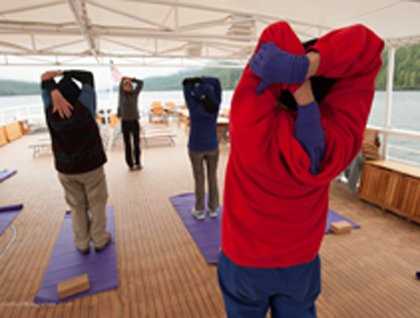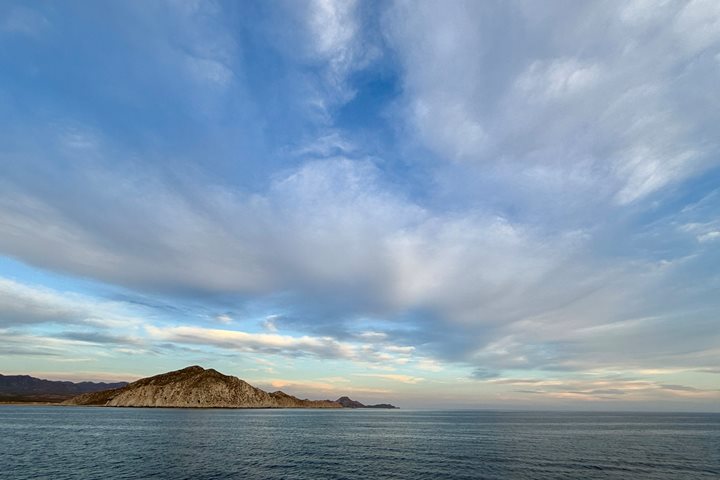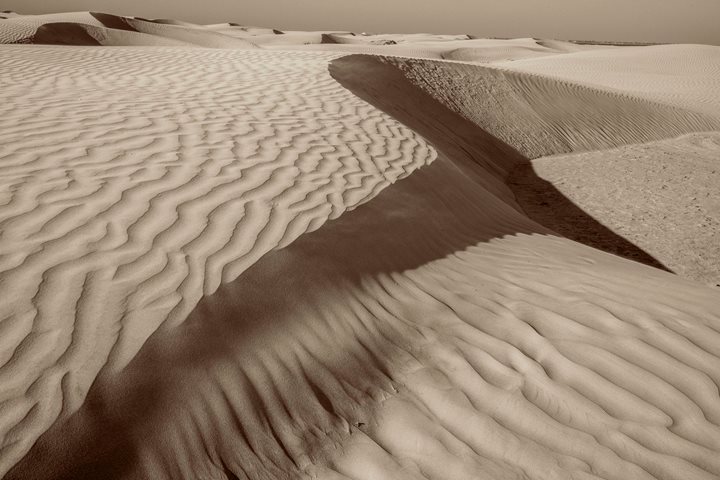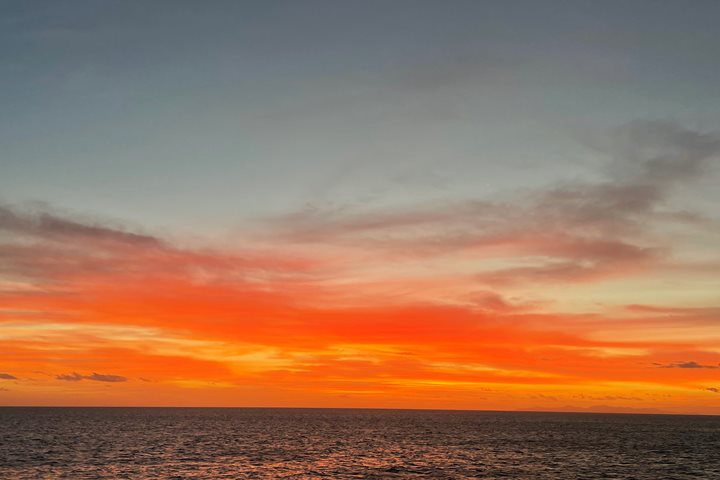“Thar she blows!” was the call from the foredeck. Just before breakfast National Geographic Sea Bird was pulling into the extraordinarily beautiful Klewnuggit Inlet, a British Columbia Provincial Marine Park. This time of year, we were the only boat in sight. But what a natural revelation! A pod of killer whales plying the blue waters appeared against the backdrop of green, forest cover hillsides capped by snowfields at higher elevations. The orca had come into the inlet to search for food to nourish their members. Their numbers included a very young calf that still had remnant pink coloration on its belly, indicating it might not yet be a full year old, which was revealed in a single juvenile breach.
The pod hunted on as we anchored up in the still waters of the inlet in the early morning. The mist and fog that wrapped the hillsides started to dissipate as the sun rose higher in the sky. The rain forest revealed its density, so thick that it almost defied penetration. Morning stretch, breakfast, time to suit up, and then our intrepid explorers took to the land, being rewarded with observations of wolf scat, bear tracks, new birds for our list, and an up close look at the plants of the forest; and to the sea by kayak and expedition landing craft. The wilderness was ours for a fleeting morning.
Later that afternoon, as we cruised further northward pressing on towards ‘southeast’ (Alaska), we encountered the same orca pod again. As we all seemed to be going in the same direction, we slowed to enjoy the wonder of our new acquaintances once again; until the press of survival took them on a different path.









